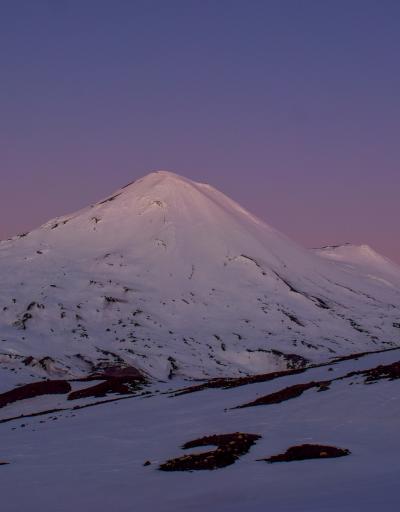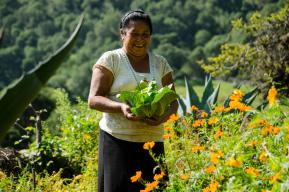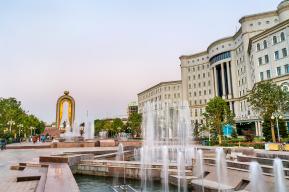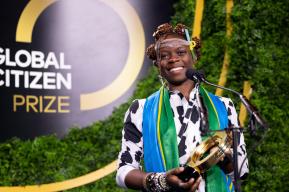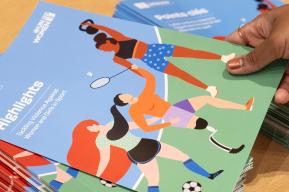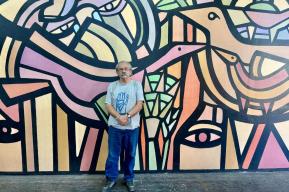As we celebrate the release of the richly illustrated book onThe UNESCO Global Geoparks, we had the privilege of speaking with Camila Jara Quilapan, an Indigenous community member from Kütralkura UNESCO Global Geopark in Chile. She shares insights into her experiences growing up amidst this remarkable landscape
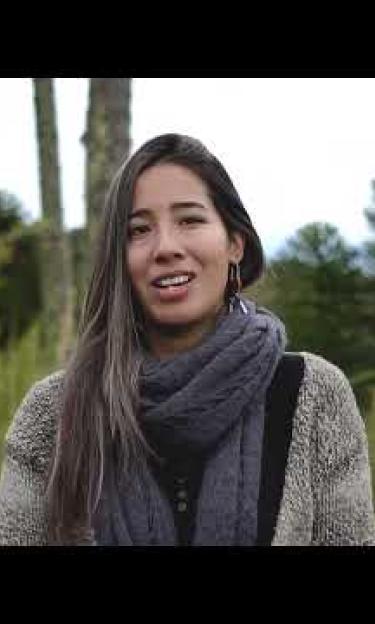
Mari mari kom pu che. mari mari kom pu wenuy. Inche ta Camila Jara Quilapan pigen.
Greetings to all people, greetings to all friends. My name is Camila Jara Quilapan.
Could you briefly introduce yourself and explain your connection with the Kütralkura UNESCO Global Geopark?
I am a Mapuche professional, a member of the Technical Committee and Indigenous person of the Kütralkura UNESCO Global Geopark in Chile. Since I was a child, I have been linked to the life and work of this community, together with those who defend the land and seek their way sustainably. I currently work as Head of the Tourism Department in one of the municipalities of Kütralkura, promoting the development of tourism from a social, economic and cultural perspective, but above all, according to the identity of the Mapuche "being", generating a real contribution to our environment and to those who live in it.
How do the Mapuche people influence the management and conservation strategies of the geopark?
Ñuke Mapu (Mother Earth), needs to be protected by all, not only by the Indigenous peoples, who have maintained a continuous connection with nature, and a worldview that is both worthy of application and an example of how to understand the world. The connection with the earth is part of our essence and we act accordingly, in harmony and balance, based on the idea of küme mongen (living well). The geopark has fostered this, bringing about better living conditions, creating an environment of respect and wisdom among the communities, entrepreneurs and local institutions we work with.
From the knowledge of the Itrofil mongen (biodiversity), the geopark is a way of managing the territories with respect and through the meeting of ancestral and scientific knowledge. A model of community works for these territories with a unique heritage, with a respectful planning of productive activities associated with the natural and cultural resources that surround us, being a privilege to live in the south of the world, at the foothills of a volcano, where we feel the heartbeat of the earth, a land generous in its biodiversity.
My role in the Technical Committee of the Kütralkura Geopark is to work in an associative way together with other Mapuche professionals, men and women. We lead a governance model that reinforces and incorporates the principles of our worldview in the planning of the geopark, based on the pillars and key themes of the UNESCO Global Geoparks, for an inclusive and sustainable development, determining our role in this territory, in my case, from an area that gives added value to the resources, from the planning and development of tourism in a millenary land.
Can you talk about the oral culture, the tales and stories associated with the geopark and its geological features?
Our worldview identifies ‘caretakers’ of the elements of nature: the Ñgen (spirits of nature) that emerge from the Lemu (forests), from the kura (rocks), from the mawida (mountain), from the ko (water). These energies together teach us about the origin of the earth, a valuable ancestral knowledge that today is preserved and harnessed in the education and conservation programmes of the Kütralkura UNESCO Global Geopark. It is the kimun Mapuche (Mapuche knowledge) that has been passed down from generation to generation, of how a volcanic eruption, an earthquake or a natural process can be the sign and manifestation of the spirits of our territory, all the Ngen fulfil a function of protection and balance, transforming the environment and our ways of life into a new beginning.
In Kütralkura, we believe in the direct link between ancestral knowledge and the geoparks of the future. This ancestral knowledge should be present not only in large conferences and geopark gatherings, but also through representatives of the native peoples of each country, advancing in the inclusion of women and young people, and that we are collaborators of küme mongen, the good way of living.
What does the geopark mean for your community? How do you see your landscape and what bond do you have with it?
Personally, it has strengthened my identity, it has given me a new space for knowledge, which is related to my values as a Mapuche woman and to that spiritual balance that I was losing in today's society. So today, not only do I have the mission to protect and revitalise my culture, but I am also in a constant process of learning and searching for spaces that contribute to my people.
The knowledge and history of life is latent in areas of geological relevance. It is our legacy from the past, what we live with today and what we will pass on to future generations. In Kütralkura, we believe in the direct link between ancestral knowledge and the geoparks of the future. This ancestral knowledge should be present not only in large conferences and geopark gatherings, but also through representatives of the native peoples of each country, advancing in the inclusion of women and young people, and that we are collaborators of küme mongen, the good way of living.
Chaltumay, lemorria kom pu che lof mulelü. Peukayal.
Thank you very much, greetings to all the people of the communities. Goodbye


